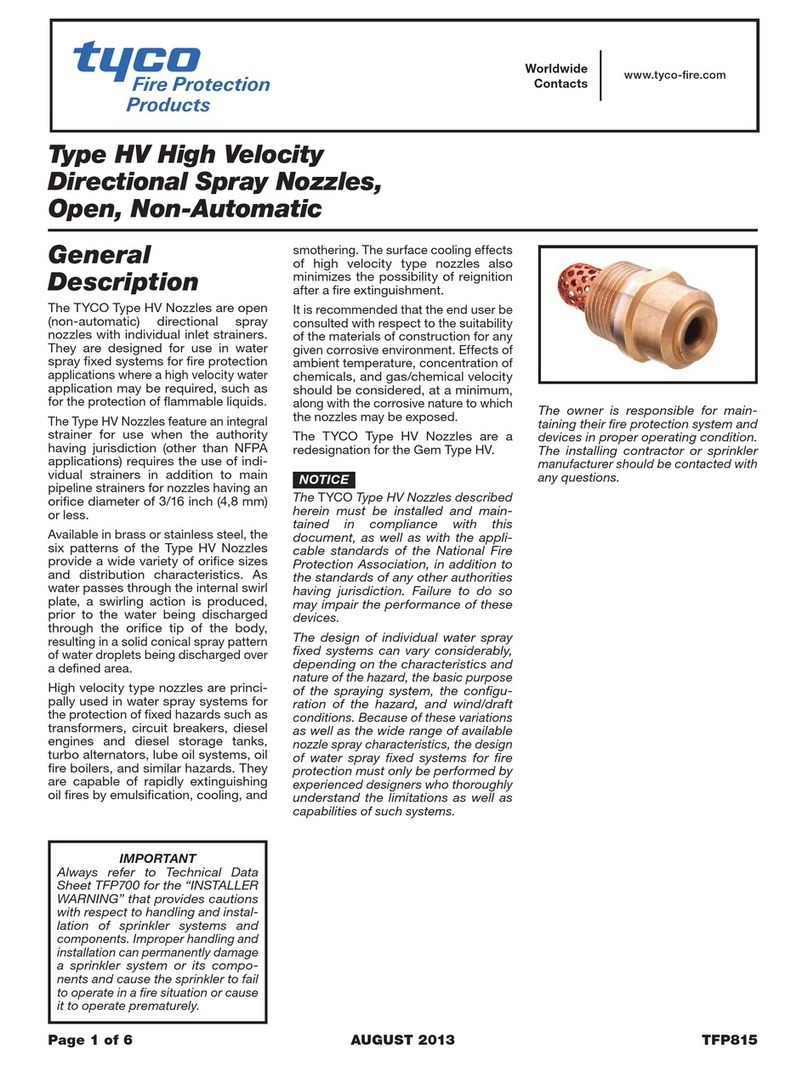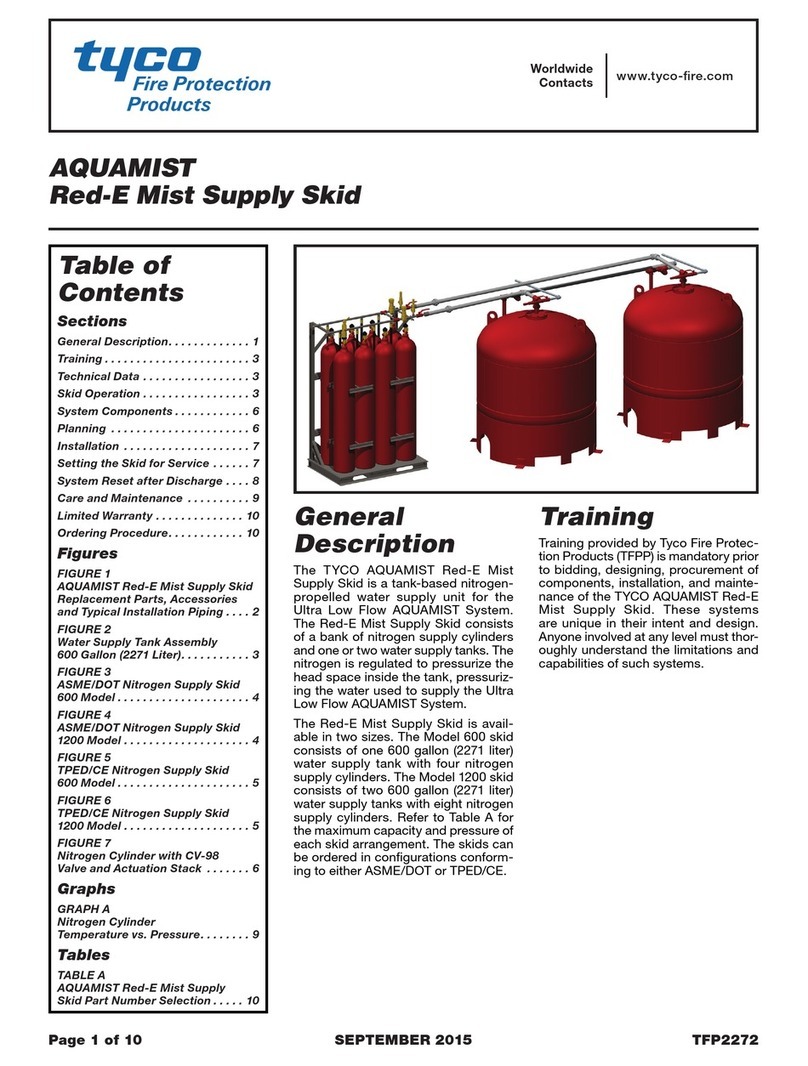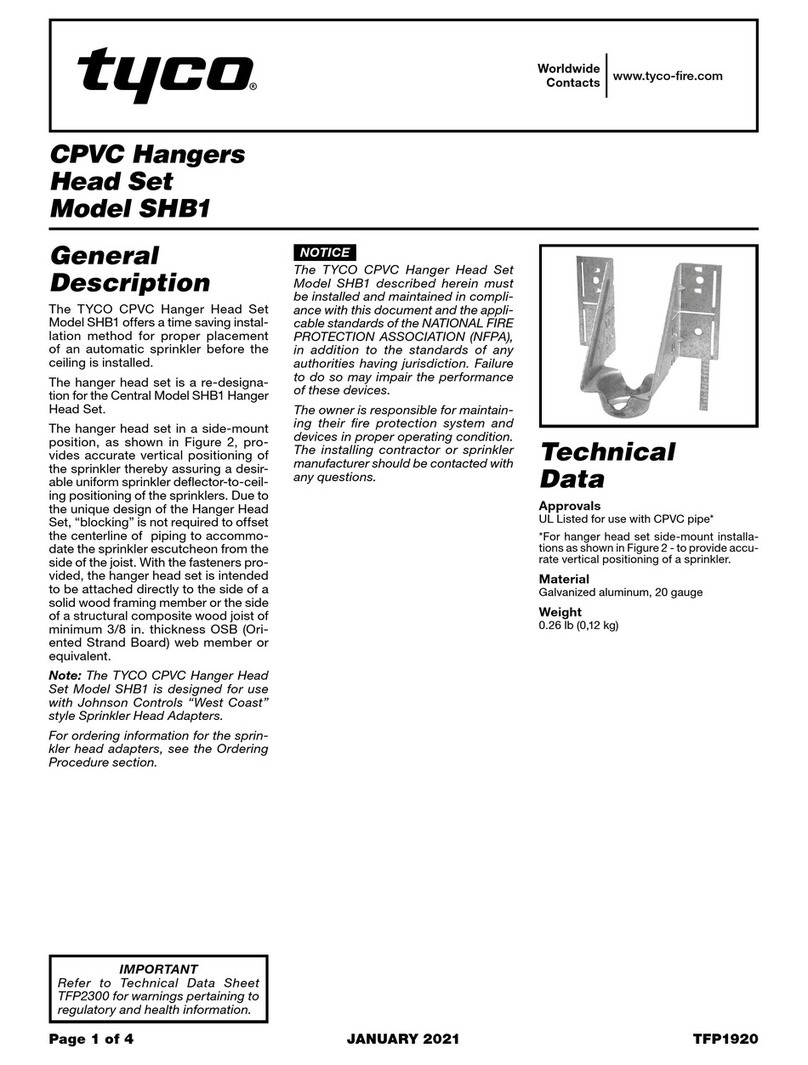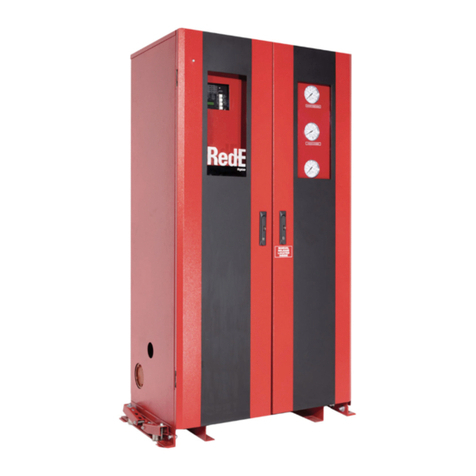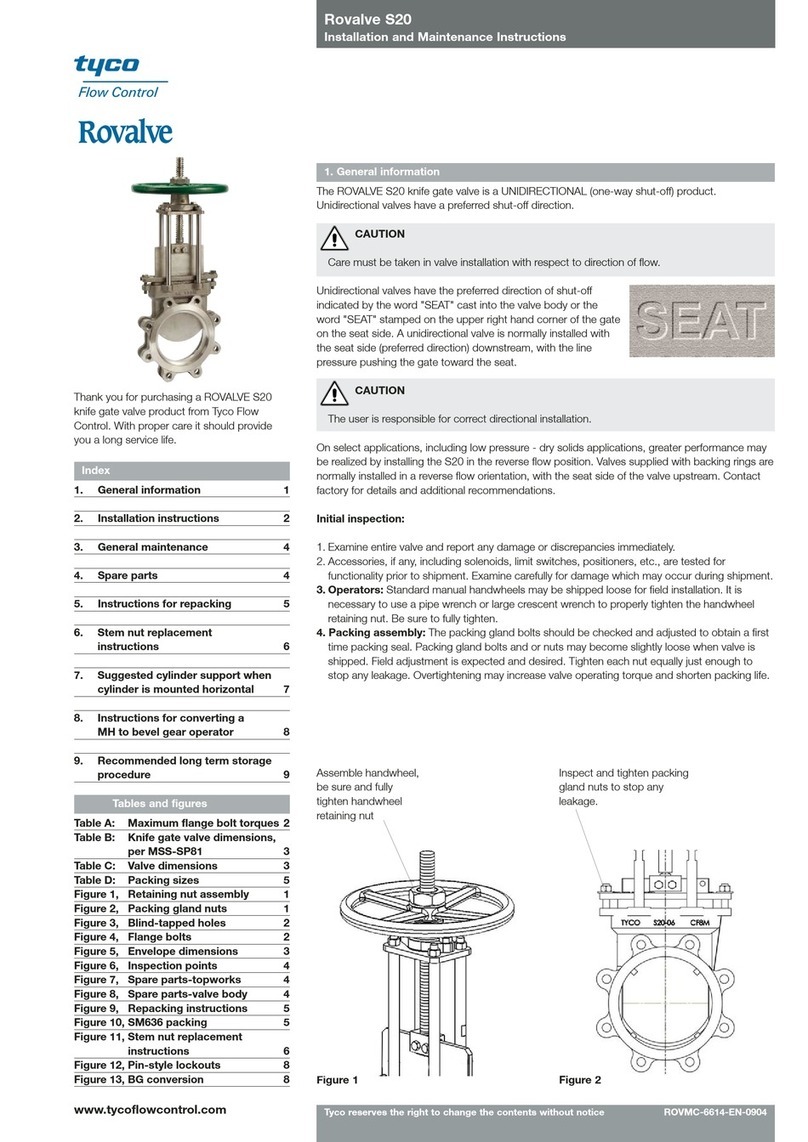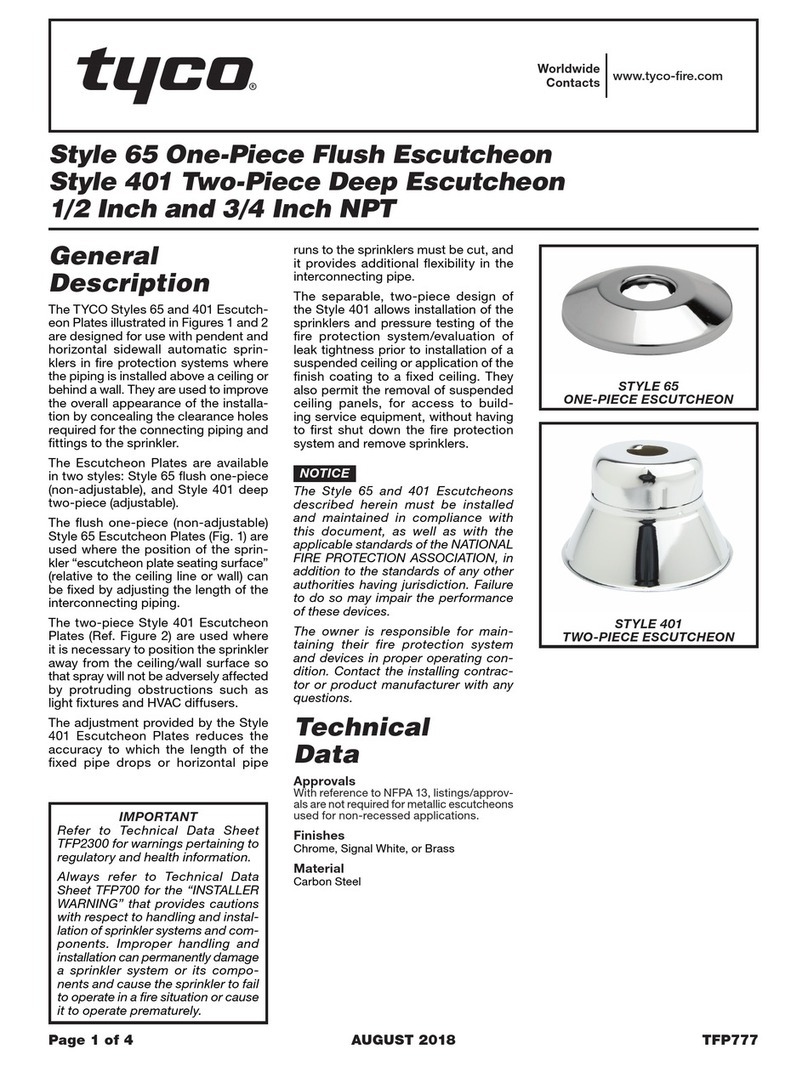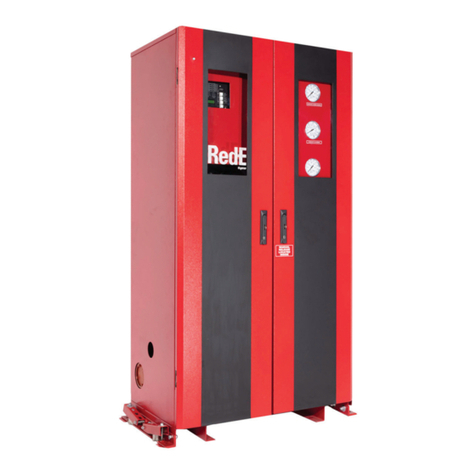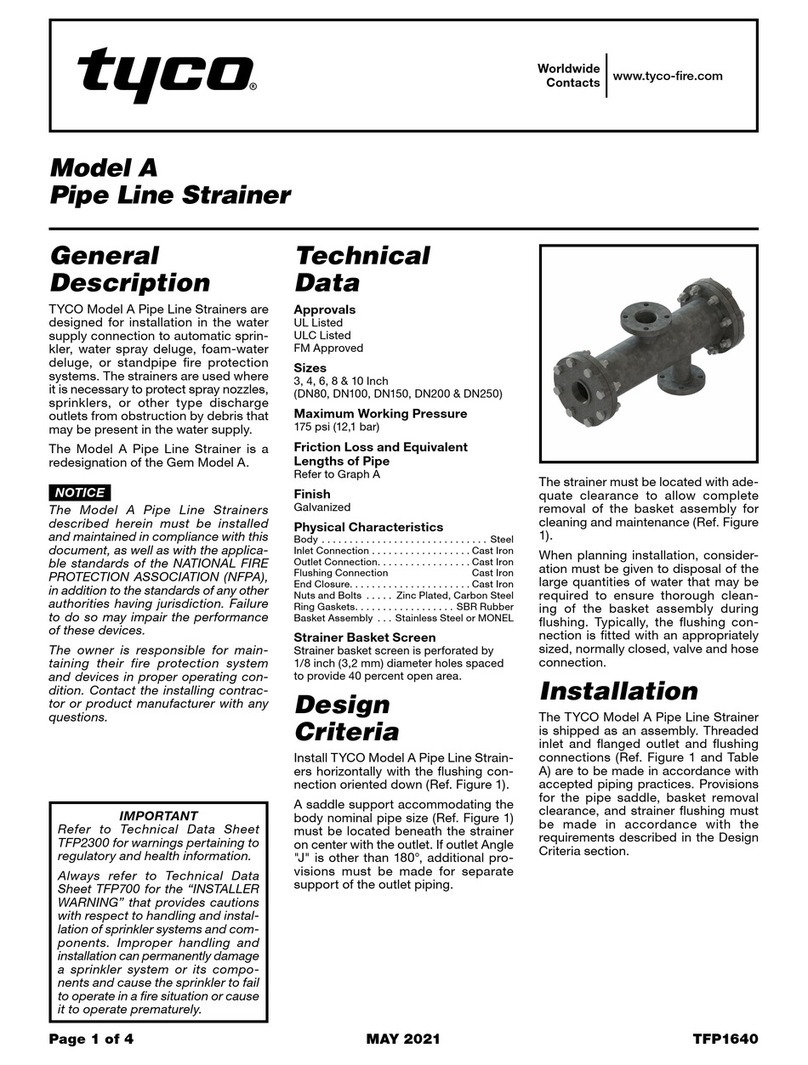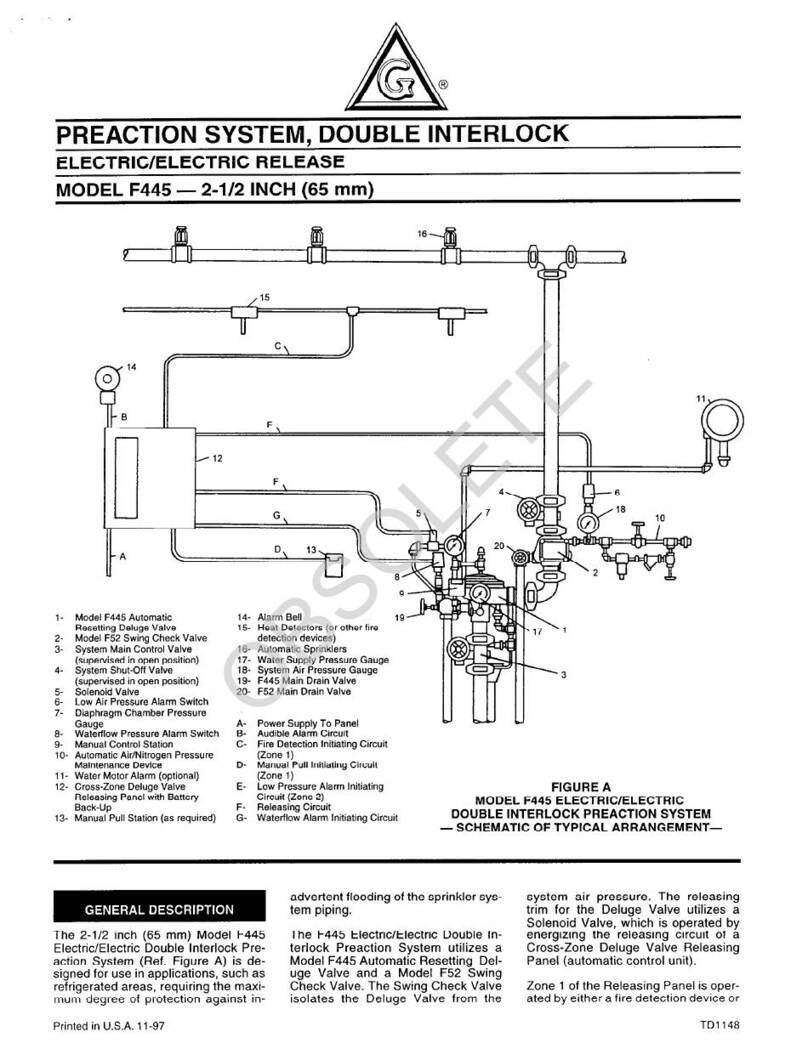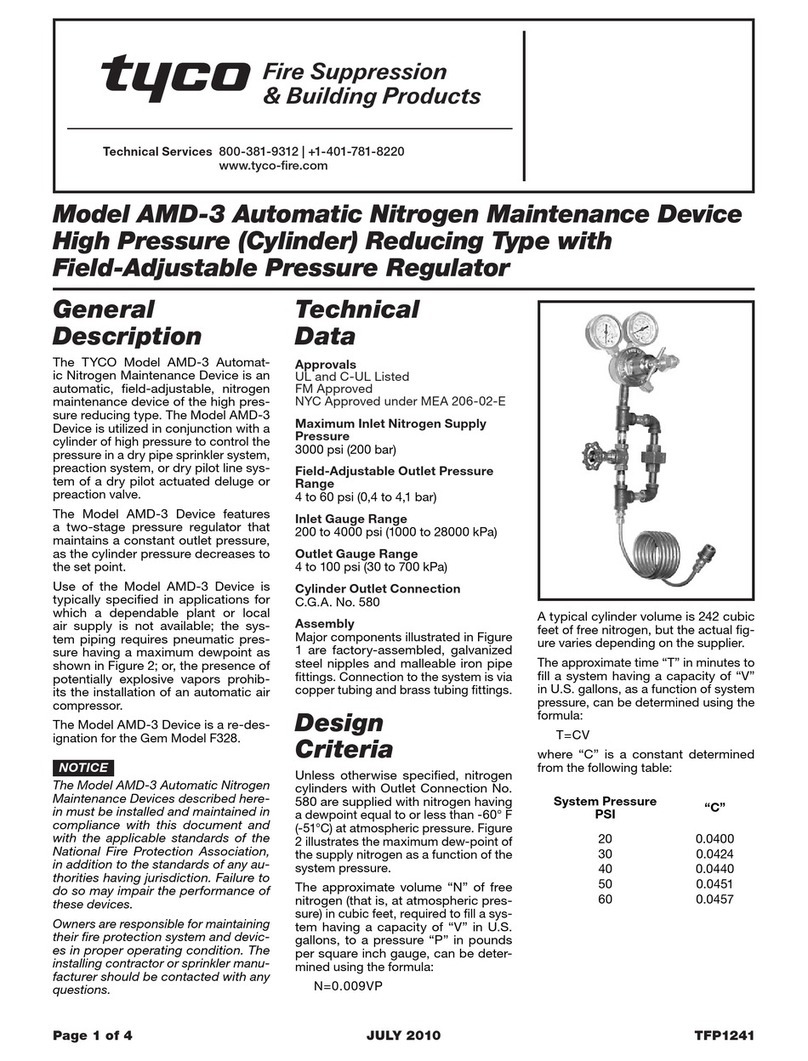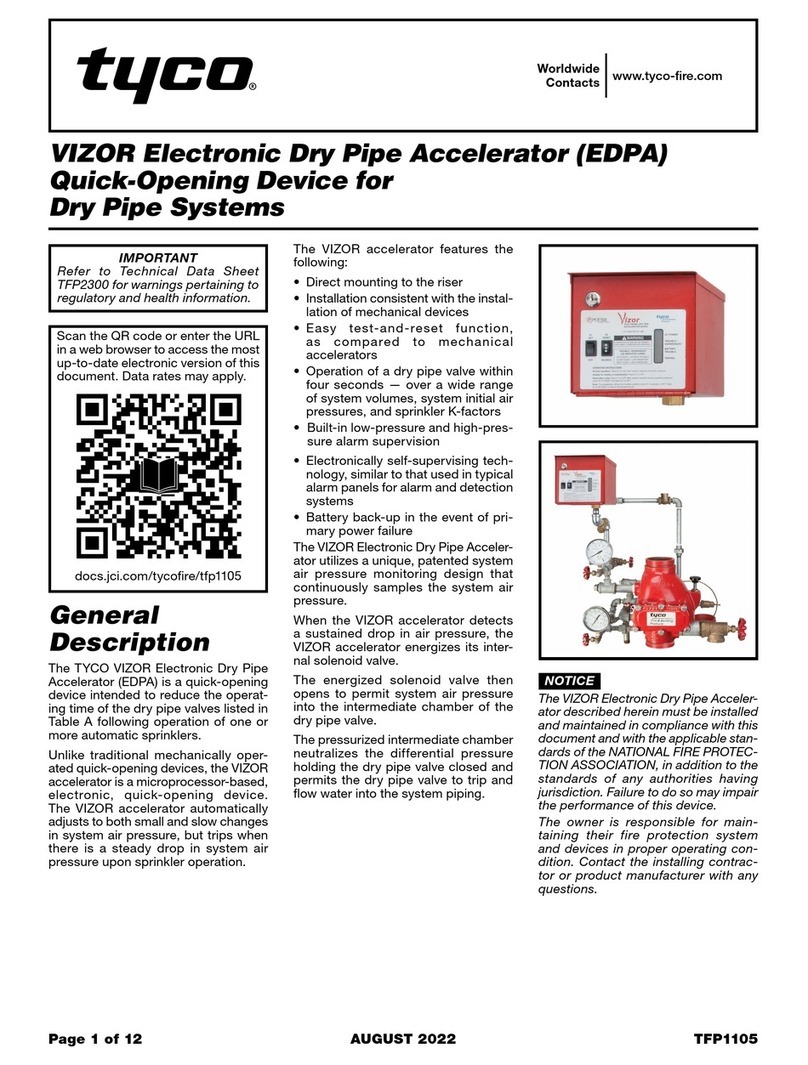
TFP1262
Page 3 of 4
FIGURE 3
MODEL TAV-D AIR VENT DRY
IN-LINE FILTER
FIGURE 2
MODEL TAV-D AIR VENT DRY
INSTALLATION SCHEMATIC
Installation
The TYCO Model TAV-D Air Vent, Dry
must be installed in accordance with
this section.
Step 1. The Model TAV-D Air Vent is
equipped with a ball valve to be con-
nected to the re sprinkler riser. The
contractor must install a 1 in. outlet
(welded or mechanical) to connect the
vent assembly to the sprinkler system
on the system side of the main control
valve as shown in Figure 2. The ball
valve must remain in the closed posi-
tion until the TYCO Nitrogen Generator
is commissioned.
Step 2. Install the vent assem-
bly in a level position. The recom-
mended mounting height is between
5 ft to 10 ft (2 m to 3 m) above the n-
ished oor.
Note: Piping to the vent assembly
cannot be installed in a configura-
tion that would trap water and prevent
drainage to the sprinkler system; a
water trap impedes the ability of the
vent assembly to vent oxygen from the
fire sprinkler system.
Step 3. Inspection of the vent assem-
bly should be performed after installa-
tion and hydrostatic testing of the re
sprinkler system. Inspection should
be performed periodically thereaf-
ter in accordance with the applicable
NATIONAL FIRE PROTECTION ASSO-
CIATION (NFPA) codes and standards
and/or the authority having jurisdiction.
Note: Inspection must include the con-
dition of the in-line filter and checking
for blockage in the “Y” strainer and the
restricted venting orifice.
Care and
Maintenance
The TYCO Model TAV-D Air Vent, Dry
must be maintained and serviced in
accordance with this section.
Before closing a re protection system
main control valve for maintenance
work on the re protection system that
it controls, permission to shut down
the affected re protection systems
must rst be obtained from the proper
authorities. All personnel who may
be affected by this decision must be
notied.
Inspection, testing, and maintenance
must be performed in accordance
with the requirements of the NFPA, and
any impairment must be immediately
corrected.
The owner is responsible for the inspec-
tion, testing, and maintenance of their
re protection system and devices in
compliance with this document, as well
as with the applicable standards of any
authorities having jurisdiction. Contact
the installing contractor or product
manufacturer with any questions.
Inspection Instructions
Step 1. The Model TAV-D Air Vent must
be inspected annually at minimum.
While the isolation ball valve is in the
open position check for air/water leaks
and ensure the pressure gauge is dis-
playing normal system pressure.
Step 2. While the isolation ball valve is
in the closed position inspect the con-
dition of the inline lter and for block-
age in the “Y” strainer and restricted
venting orice. Twist the black Filter
Housing clockwise until it can be
removed to expose the lter element.
Step 3. Replace the In-Line Filter
element if a visual inspection reveals a
signicant collection of debris.
In-Line Filter Replacement
Instructions
Step 1. Close the isolation ball valve.
Step 2. Depressurize the housing by
pressing the pressure relief valve on
the bottom of the in-line lter housing
shown in Figure 3.
Step 3. Remove the lower section of
the In-Line Filter housing by turning the
lter housing counterclockwise.
Note: A rubber o-ring seal is located
between the upper and lower sections
of the filter housing.
Step 4. Remove the old lter by turning
the lter counterclockwise.
Step 5. Replace with a new lter, TYCO
Model TFLT Replacement Filter Kit.
The lter is secured to the housing by
turning the lter clockwise.
Note: Ensure the filter housing is
secured only finger/hand tight.
Step 6. Install the rubber o-ring/seal on
the lower section of the lter housing.
Step 7. Re-install the lter housing by
turning the lter housing clockwise.
Note: Ensure the filter housing is
secured only finger/hand tight.
Step 8. Open the isolation ball valve.
1 IN.
OUTLET
REQUIRED
NITROGEN
SUPPLY
DRY/PREACTION
SPRINKLER
VALVE
MODEL TAV-D
MANUAL VENT
RISER
FILTER
HOUSING
FILTER
PRESSURE
RELIEF
VALVE
